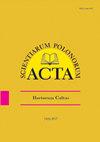干旱胁迫下硅和细胞分裂素处理对芝麻产量、生化和抗氧化反应的影响
IF 0.7
4区 农林科学
Q4 HORTICULTURE
引用次数: 0
摘要
干旱是作物生长的主要限制因素之一,会严重降低植物的生长和产量。施用细胞分裂素(Ck)和硅(Si)肥料有助于提高芝麻植物对干旱胁迫的耐受性。本研究旨在评估细胞分裂素(Ck)和硅肥对干旱胁迫条件下芝麻植物种子产量、丙二醛(MDA)含量、脯氨酸含量和抗氧化酶活性的影响。该试验于 2020 年和 2021 年两个作物年度在 Firuzkandeh 农业研究站进行,采用随机完全区组设计,分小区-阶乘法,三次重复。主小区为三个干旱胁迫水平:对照、中度干旱胁迫(MDS)和严重干旱胁迫(SDS),子小区为三个施硅水平:对照或不施硅、硅酸钙和纳米硅,以及两个施Ck水平:对照或不施Ck、施Ck。结果表明,与对照条件相比,MDS 条件下芝麻产量减少了 9.3%,SDS 条件下减少了 32.7%。在 SDS 条件下,植株的 MDA 含量和脯氨酸积累最高,而在 MDS 条件下,抗氧化酶的活性较高。在 MDS 条件下,联合施用 Si 和 Ck 的植株抗氧化酶活性更高,MDA 含量降低。然而,与硅酸钙相比,纳米硅处理的植物获得了更高的种子产量、更高的脯氨酸含量和更高的抗氧化酶活性。总之,本研究的结果表明,叶面喷施纳米 Si + Ck 是减轻干旱胁迫负面影响和提高芝麻产量的一种可行方法。本文章由计算机程序翻译,如有差异,请以英文原文为准。
Variations of yield, biochemical and antioxidative responses in sesame with silicon and cytokinin treatments under drought stress
Drought is one of the major limiting factors for crops that severely reduce plant growth and productivity. The application of cytokinin (Ck) and silicon (Si) fertilizers can help increase tolerance to drought stress in sesame plants. The present study aimed to evaluate the effects of Ck and Si fertilizers on seed yield, malondialdehyde (MDA) content, proline content, and antioxidant enzyme activities in sesame plants under drought-stress conditions. The experiment was conducted as a split plot-factorial in a randomized complete block design with three replications at Firuzkandeh Agricultural Research Station during two crop years of 2020 and 2021. The main plot was three drought stress levels: control, moderate drought stress (MDS), and severe drought stress (SDS), whereas the subplots were three Si application levels: control or non-use of Si, calcium silicate and nano-Si, and two Ck application levels: control or non-use of Ck, Ck application. The results indicated that the sesame seed yield was reduced by 9.3% under MDS and by 32.7% under SDS when compared with control conditions. The highest MDA content and proline accumulation were observed when the plants were subjected to SDS, whereas the higher activity of antioxidant enzymes occurred under MDS. Higher activity of antioxidant enzymes and reduction of MDA content was observed in the plants treated by combined application of Si and Ck under MDS. However, the higher seed yield, greater proline content, and higher antioxidant enzyme activities were obtained from plants treated by nano-Si than calcium silicate. Overall, the results of the present study revealed that the foliar application of nano-Si + Ck can be a promising option for mitigating the negative impacts of drought stress and improving sesame seed yield.
求助全文
通过发布文献求助,成功后即可免费获取论文全文。
去求助
来源期刊
CiteScore
1.30
自引率
14.30%
发文量
61
审稿时长
4-8 weeks
期刊介绍:
In Acta Scientiarum Polonorum Hortorum Cultus we publish original research papers and review articles containing new and significant information on broad aspects of horticulture and related disciplines. The papers are published in English only, in six issues yearly.

 求助内容:
求助内容: 应助结果提醒方式:
应助结果提醒方式:


